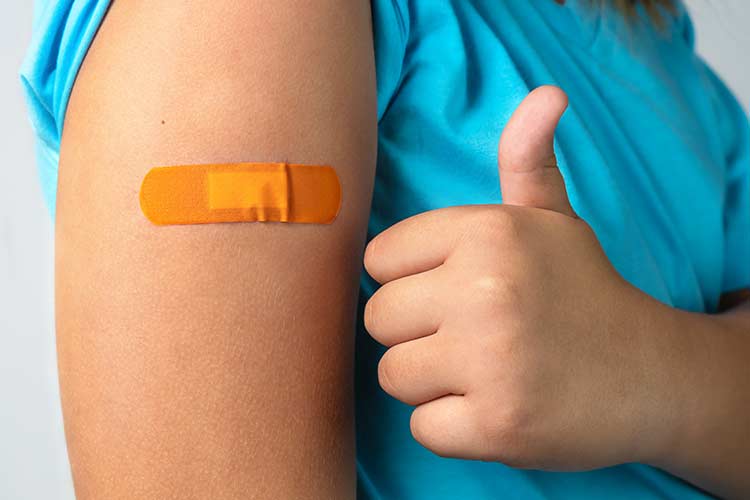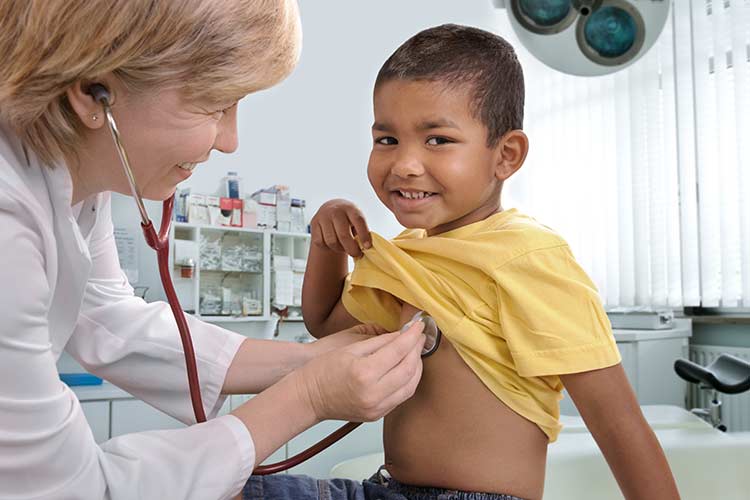Join Our eNewsletter!
Subscribe to our monthly newsletter to receive encouraging advice to help you lead a healthy lifestyle.

Make Sure Your Kids’ Immunizations Are Up to Date
Due to the development of vaccines, many diseases that used to cause serious harm or even death to children have been eradicated in the U.S. In the 1940s and 1950s, parents lived in fear that polio would leave their children paralyzed until a vaccine emerged that effectively eliminated the virus. In the 1970s, vaccination led to a nearly 100% reduction in mumps, which had been a threat to children since the 1930s. These are just two examples of the positive effects immunization has had on the health of America.
Most schools in the U.S. require parents to submit their student’s immunization records during enrollment or registration. Without vaccines, your child is at risk of becoming seriously ill or even dying from childhood diseases, such as measles and whooping cough, which are both still valid threats. According to the Centers for Disease Control and Prevention (CDC), in 2019 there were 1,274 cases of measles and 18,617 cases of whooping cough in the U.S., even though measles were declared eliminated in 2000.

Are Vaccines Safe?
Vaccination is a safe, highly effective, and easy way to help keep your family healthy. If you’re concerned about the safety of vaccinations or are unclear about how they’re developed, here are some helpful facts from the CDC:
- Vaccines use very small amounts of antigens (parts of a germ) to help your child’s immune system recognize and learn to fight serious diseases.
- The recommended vaccination schedule balances when a child is likely to be exposed to a disease and when a vaccine will be most effective.
- Vaccines are tested extensively by both the CDC and Food and Drug Administration (FDA) prior to being given to the public to ensure they can be safely and effectively administered at the recommended ages.
- The CDC, FDA, National Institutes of Health (NIH), and other federal agencies monitor and investigate any potential safety concerns regarding vaccines.
- You can request the CDC’s vaccine information statements (VISs) from your healthcare provider, which explain the benefits and risks of your child’s vaccines.
Keeping Up with Vaccinations
At Kelsey-Seybold, we strongly advise parents to stay up to date with their kids’ immunizations and to get current on any missed vaccinations before heading back to school after summer break. But we realize it’s not always easy to know which vaccinations your child needs and when. Immunization charts can be confusing, so we’ve done our best to summarize the vaccinations your child may need before they start a new grade.
Important: Let your healthcare provider know if your child has any serious allergies, including allergies to yeast, latex, or chicken eggs, before they receive any vaccines.

Prior to entering kindergarten (ages 4 – 6):
- 5th dose DTaP (diphtheria, tetanus, whooping cough)
- 4th dose IPV (polio)
- 2nd dose MMR (measles, mumps, rubella)
- 2nd dose Varicella (chickenpox)
Entering second to fifth grade (ages 7 – 10):
- Your child doesn’t require any vaccinations at this time unless they’ve missed a scheduled vaccine between birth and age 6
- You can have your child vaccinated for HPV (human papillomavirus) as early as age 9
Prior to entering seventh grade (ages 11 – 12):
- One dose MenACWY (meningococcal disease)
- One dose Tdap (tetanus, diphtheria, whooping cough)
- First or second dose HPV (human papillomavirus)
During high school/entering college (age 16):
- Second dose MenACWY (meningococcal disease)
- You can have your child vaccinated against serogroup B meningococcal disease (MenB vaccine)
- Any vaccinations your child missed prior to age 16
Flu and COVID-19 Vaccinations
It is recommended to have your child vaccinated every year for the flu starting at 6 months old. Immunization for COVID-19 is also recommended beginning at 6 months old.

Making sure your child is current with immunizations is one of their best defenses against potentially deadly contagious disease. A good time to ensure your child is up to date is during their annual well-child exam, ideally while they’re on summer break prior to entering the next grade. If you’re unsure of your state’s school immunization requirements, check with your child’s doctor or school, or refer to your state’s health department.








